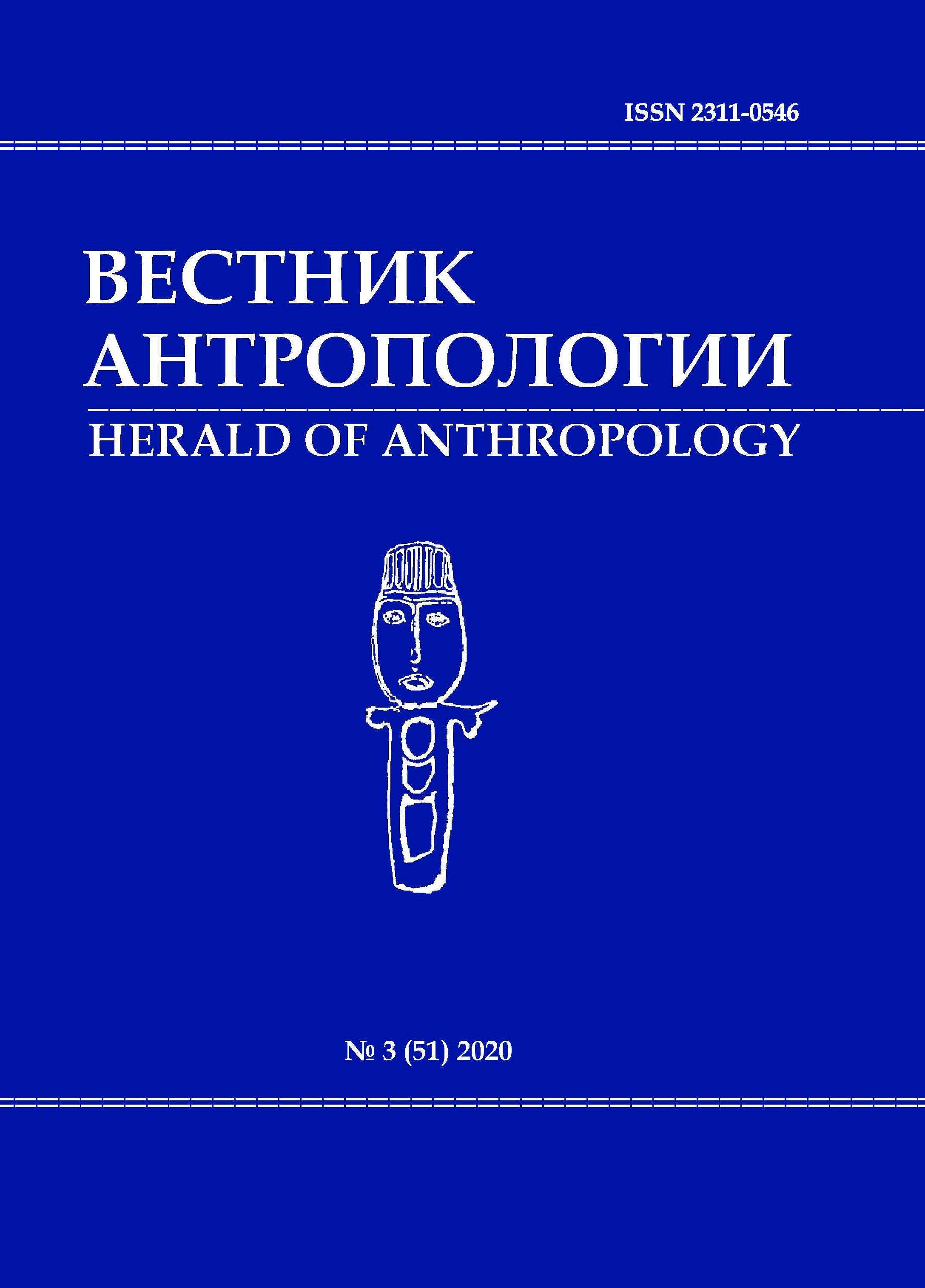Inter-ethnic marriages among Russians and Kazakhs in the cities of Northern Kazakhstan
DOI: 10.33876/2311-0546/2020-51-3/136-152
Keywords:
inter-ethnic marriages, Kazakhs, Russians, inter-ethnic relationsAbstract
The article discusses the main trends in the marriage relations between urban Kazakhs and Russians in the North Kazakhstan region in the period between 1996 and 2016. The authors aim not only to show the quantitative changes taking place in the field of family and marriage, but also to analyze the main factors that affect the overall development of inter-ethnic marriages. Inter-ethnic marriages are relevant predictors of the inter-ethnic relations in general and allow to assess the existing ethno-cultural distances. In this regard, the main attention was paid to marriages between Kazakhs and Russians of the region. The research was based on the materials of the City Civil Registry Office as well as on the ethno-sociological surveys. A comparative analysis of the development of family and marriage relations in other regions of Kazakhstan was made based on data from published literature.
The study of inter-ethnic marriages between 1996 and 2016 revealed an obvious positive shift in the attitudes both among local Kazakhs and Russians. This is largely due to the accelerated urbanization of the Kazakh population and the widespread system of European social attitudes, including individualization of conscience and the prevalence of the egalitarian family. Based on empirical data, further increase in the number of marriages of Kazakhs and Russians in the region is predicted. Despite the fact that the main share of marriages is currently mono-ethnic marriages, an ethno-sociological survey in April 2020 revealed a tolerant attitude of the majority of Kazakh and Russian youth to the idea of creating a family with representatives of another ethnic group. The study also demonstrated that in Northern Kazakhstan, the two leading ethnic groups avoided the scenario of "communization" and turned out to be "open" in inter-ethnic relations, and in future, this can level out ethno-cultural differences and block inter-group conflicts. This trend has been identified so far at the local level and contrasts with the trends of family and marriage relations in the southern region, which show the rigidity of inter-ethnic "partitions" and the strength of traditional attitudes.
References
1. Abdulina, A.T. 2019. Osobennosti sem'i i braka i etnoyazykovaya situatsiya v srede gorodskikh kazakhov v kontse 1950-1980-kh [Features of family and marriage and the ethnolinguistic situation among urban Kazakhs in the late 1950s and 1980s.]. Еdu.e-history.kz. http://edu.e-history.kz/kz/publications/view/800.
2. Arutyunyan, Yu.V., L.M. Drobizheva, and A.A. Susokolov. 1999. Etnosotsiologiya [Ethnosociology]. Moscow: Aspekt-Press.
3. Gorenburg D. 2006. Rethinking Interethic Marriage in the Soviet Union. Post- Soviet Affairs 22 (2): 145–165.
4. Dinamika osnovnykh sotsial'no-ekonomicheskikh pokazatelei. Demograficheskayastatistika. Dinamikachislennostinaseleniya [The dynamics of the main socio-economic indicators. Demographic statistics. Population dynamics]. https://stat.gov.kz/region/264023/dynamic.
5. Evstigneev, Yu. A. 1973. Dinamika mezhetnicheskikh brakov v srede naseleniya Severnogo Kazakhstana (1940-1969 gg.) [Dynamics of interethnic marriages among the population of Northern Kazakhstan (1940–1969)]. PhD diss. Moscow State University.
6. Kalysh, A.B. 2013. Sem'ya i brak v sovremennom Kazakhstane [Family and marriage in modern Kazakhstan]. Almaty: Arys.
7. Kozlov, V.A. 2017. Kazakhstan i Estoniya: otsenka predpochtenii pri vstuplenii v mezhnatsional'nye braki [Kazakhstan and Estonia: Assessing Preferences for Interethnic Marriages]. Naselenii i ekonomika 1: 71–88.
8. Malikov, A.M. 2014. Khodzhi Yuzhnogo Kazakhstana: istoriya i identichnost' [Khoji of South Kazakhstan: History and Identity]. Researchgate.net. https://www.researchgate.net/publication/325105859.
9. Shaukenova, Z.K. 2002. Sotsial'noe vzaimodeistvie etnosov v sovremennom kazakhstanskom obshchestve [Social interaction of ethnic groups in modern Kazakhstani society] Astana: Parlament RK.
10. Susokolov, A.A. 1987. Mezhnatsional'nye braki v SSSR [Interethnic marriages in the USSR] Moscow: Mysl'.
11. Ualieva, S.K. 2011. Mezhetnicheskie braki v Kazakhstane i deti [Interethnic marriages in Kazakhstan and children] Demoscope.ru. http://www.demoscope.ru/weekly/2011/0451/analit04.php.
12. Ualieva, S.K., and E. Egdar. 2011. Mezhetnicheskie braki, smeshannoe proiskhozhdenie i «druzhba narodov» v sovetskom i postsovetskom Kazakhstane [Interethnic marriages, mixed origin and “friendship of peoples” in Soviet and post-Soviet Kazakhstan] Neprikosnovennyi zapas 6: 234–244.





















